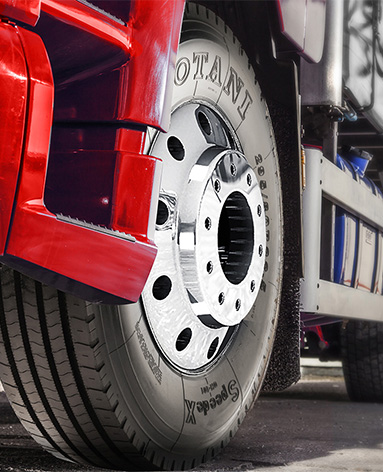Nov . 13, 2024 14:10 Back to list
brake drum vs brake disc
Brake Drum vs. Brake Disc A Comparative Analysis
When it comes to vehicle braking systems, the choice between brake drums and brake discs is crucial for performance, safety, and maintenance. Each system has its unique advantages and drawbacks, affecting not only how vehicles stop, but also their overall driving experience.
Brake Drum Systems
Brake drums have been a longstanding choice in automotive design, especially for rear wheels. They operate on a simple principle when the brake pedal is pressed, brake shoes with friction material expand against the inner surface of a rotating drum, creating the necessary friction to slow down or stop the vehicle. One significant advantage of brake drums is their cost-effectiveness and compactness, which allows for potentially lighter and less complex designs. They effectively provide strong stopping power, especially in smaller vehicles or those that do not require high-performance brakes.
However, brake drum systems have some notable drawbacks. They are more prone to overheating due to their enclosed design, which can lead to brake fade during prolonged braking. Moreover, drums tend to accumulate dust and debris more readily, which can adversely affect performance and require more frequent maintenance. Their weight can also be a disadvantage, as it may impact fuel efficiency.
Brake Disc Systems
brake drum vs brake disc

In recent years, brake discs, also known as rotors, have become more popular, especially for front braking systems in modern vehicles. The brake disc system employs a different mechanism when the brake pedal is pressed, brake pads clamp onto the flat surface of a rotating disc. This design promotes more uniform heat dissipation, minimizing the risk of brake fade and maintaining consistent stopping power.
The advantages of brake discs include superior performance under various driving conditions, particularly in high-speed scenarios. Discs are less likely to overheat and can handle heavier loads, making them ideal for performance and heavy-duty vehicles. Additionally, they are easier to inspect and replace, leading to less downtime during maintenance.
However, brake disc systems are generally more expensive to manufacture and can be heavier, which may slightly offset the performance benefits in some scenarios. They can also be prone to warping if not properly maintained or if subjected to extreme temperature fluctuations.
Conclusion
In summary, the choice between brake drums and brake discs ultimately depends on the vehicle type, intended use, and driver preferences. While brake drums offer cost-effective, compact solutions suitable for many applications, brake discs provide superior performance under demanding conditions. Understanding these differences is key to making informed decisions about vehicle maintenance and upgrades, ensuring safety and efficiency on the road.
-
ROR Web Development: Build Fast, Scalable, Secure Apps
NewsAug.17,2025
-
Scania Brake Drums: OEM Quality for Optimal Safety & Durability
NewsAug.16,2025
-
R.V.I: Advanced Remote Visual Inspection for Precision
NewsAug.15,2025
-
Discover HYUNDA: Innovative Vehicles, Equipment & Solutions
NewsAug.14,2025
-
R.V.I: Unlock Advanced Insights & Real-time Performance
NewsAug.13,2025
-
Kamaz Brake Drum: Durable & Reliable for Heavy Duty Trucks
NewsAug.12,2025
